Publications
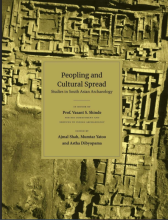
|
S Udayakumar Assistant Professor, School of Humanities Revisiting the Metal working in Southeast Rajasthan: A Historical study, in Peopling and cultural spread https://cms.nias.res.in/sites/default/filesefs/2025-04/Uday_and_Pandey_sir_New_publication_on_r.pdf Udaya Kumar, S., & Pandy, L. (2023). Revisiting the Metal working in Southeast Rajasthan: A Historical study. Dev Publishers & Distributors. |
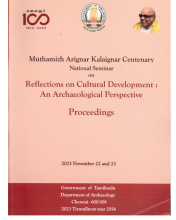
|
Sharada Srinivasan Investigating early iron finds from Mayiladumparai Tamil Nadu http://eprints.nias.res.in/2606/ In: Muthamizh Arignar Kalaignar Centenary National Seminar on 'Reflections on Cultural Development: An Archaeological Perspective' Proceedings, 22-23 Nov 2023, Chennai. |
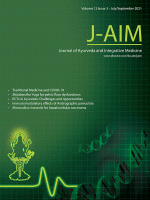
|
Pushya A Gautama Doctoral Student, Consciousness Studies Programme Integrative management of anaplastic astrocytoma through a combination of Ayurveda and conventional care: A case report https://www.sciencedirect.com/science/article/pii/S0975947623000645?via%3Dihub= Gautama, P. A., Subramanian, N., Varma, R. G., & Gangadharan, G. G. (2023). Integrative management of anaplastic astrocytoma through a combination of Ayurveda and conventional care: A case report. Journal of Ayurveda and Integrative Medicine, 14(5),100748 Anaplastic Astrocytoma (AA) is a relatively rare cancer, and is associated with a median life expectancy of 3 years after conventional therapy. Complete cure of the highly infiltrative AA is uncommon, and reports of positive outcome in cases of partial resection of AA are rare. Further, integrative approaches to the management of AA remain underexplored. This paper contributes to the limited literature in this domain by presenting a case that was successfully treated through integrative conventional and Ayurvedic interventions. A patient diagnosed with AA in the left parieto-occipital lobe underwent partial lesion resection followed by post-operative radiation and chemotherapy. The patient was given a conservative post-surgical life expectancy of two years, and was referred to an Ayurveda hospital for further treatment. The Ayurvedic intervention was focussed on redressal of radiation and chemotherapy side-effects, improvement of quality of life, and improving the patient’s strength and immunity. Following this novel integrative model of care, the patient was able to resume all personal and professional routines, and a contrast MRI revealed absence of residual lesion allowing the patient to outlive his initial prognosis by several years till date. We posit that the findings of this report merit further examination in the interest of potential improvements to existing models of care. |

|
Srikumar M Menon Tusks of wisdom: The elephant in the Buddhist art of Kanaganahalli Co-Authored with Anindya Sinha, Composing Worlds with Elephants: Interdisciplinary Dialogues (Eds. Láine N, Rahmat K and Kiel P). IRD Editions, Montpellier, France, pp. 123-135. The Asian elephant has always occupied a prominent place in the art of the Indian subcontinent – from Harappan seals and prehistoric petroglyphs to the later plastic art of Buddhist stupas and temples of the Hindu, Buddhist and Jain faiths. In this paper, we discuss the representation of elephants at the Buddhist stupa at Kanaganahalli, in northern Karnataka. Most of the sculptures are in shallow relief, on limestone, and are excellent examples of the quality of early Indian art, offering unique insights into the relationship between humans and the Asian elephant in the early centuries of the Common Era, and the various uses that captive elephants were subject to at the time. |
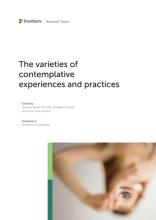
|
Sisir Roy The Varieties of Contemplative Experiences and Practices https://www.frontiersin.org/research-topics/18731/the-varieties-of-contemplative-experiences-and-practices Co-Edited With Sucharit Katyal, Philippe R. Goldin and Anna-Lena Lumma, Frontiers in Psychology. ISBN 978-2-8325-2900-3 While the diverse contemplative techniques are employed across a plethora of traditions around the world, contemplative research over the years has not reflected this variety. Despite growing interest in research on meditation, studies in contemplative science have largely focused on a narrow selection of practices (e.g., mindfulness, compassion, etc.) and traditions (i.e. Buddhism, Transcendental Meditation etc.). By choosing this topic, we hope to broaden the scope of contemplative science. |
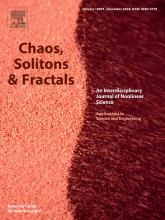
|
Nithin Nagaraj Analysis of logistic map based neurons in neurochaos learning architectures for data classification https://www.sciencedirect.com/science/article/abs/pii/S0960077923002485?via%3Dihub= Co-authored with Remya Ajai A.S. and Harikrishnan N.B. , Chaos, Solitons & Fractals Vol.170:113347 |

|
Malavika Kapur Lore of the honey gatherers and other stories http://eprints.nias.res.in/2717/ Saptarishi Publishing, New Delhi. ISBN 9789394158009 |
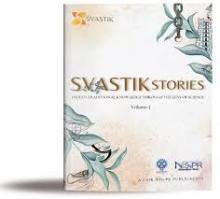
|
Sharada Srinivasan Metal Mirror Marvel From Aranmula, Kerala:A Rare Specular Delta Bronze Craft. http://eprints.nias.res.in/2527/ SVASTIK Stories: Indian Traditional Knowledge Through the Lens of Science (Vol.1). CSIR-NiScPR, pp. 8-11. ISBN 978-81-7236-387-1 Mirrors are usually synonymous with glass in modern times. Metal mirrors are rare to find in the contemporary age. Yet, Aranmula is a place in Kerala, south of India which is famous for making metal mirrors from the alloy of copper and tin. It is a traditional art practiced by local communities of that village where the entire mirror is handmade. The best part is that the metal mirror is highly polished and carved out in such a manner that it gives an absolute point image with the highest quality of reflectance. This chapter takes its readers to a journey to unveil the history of Aranmula mirrors, its specifications, method of casting, and most importantly the science behind all these spectra to popularise this dying traditional craft of India. |
